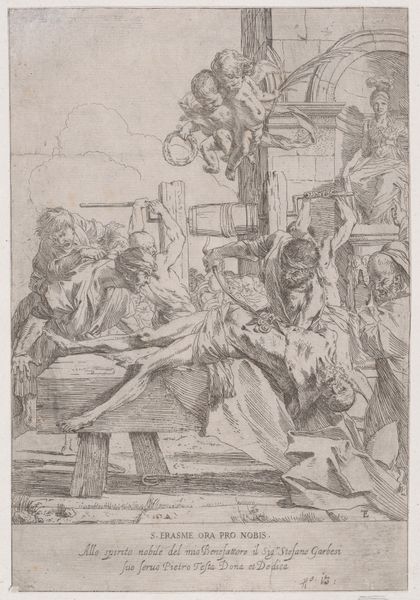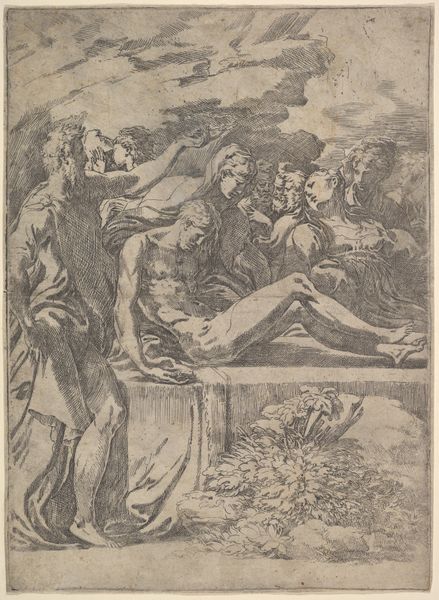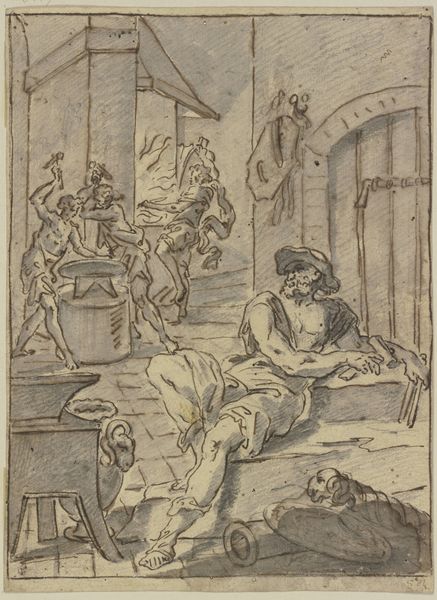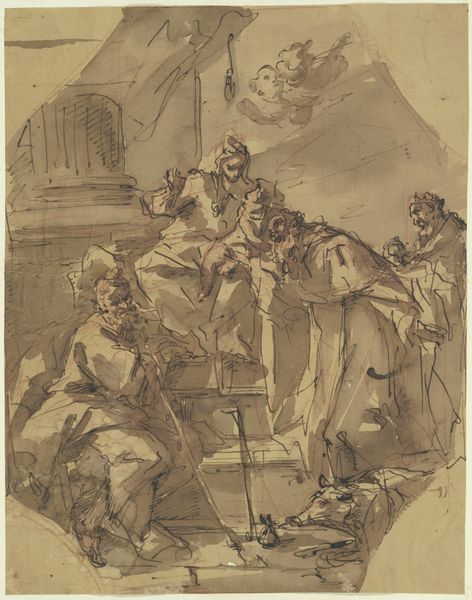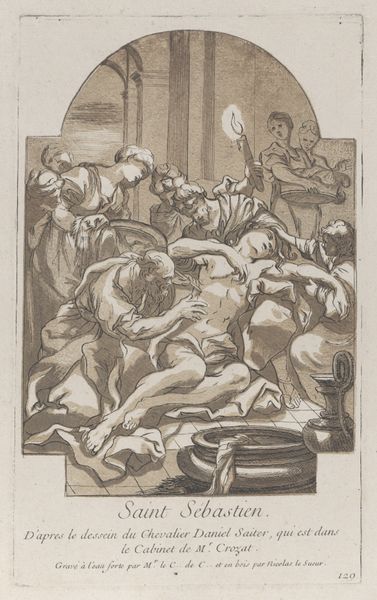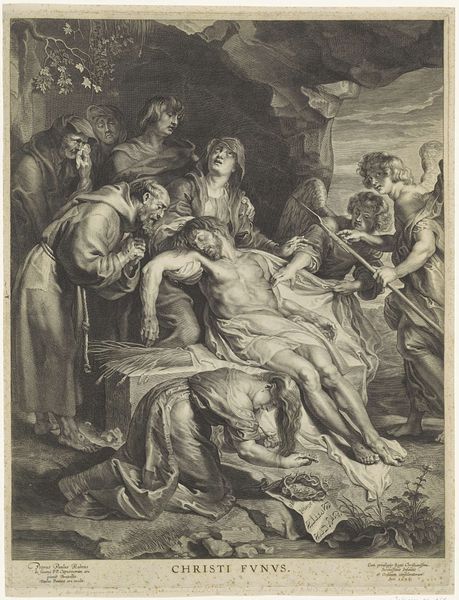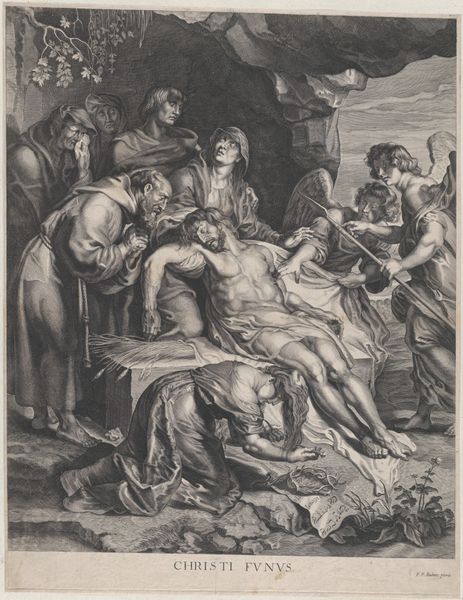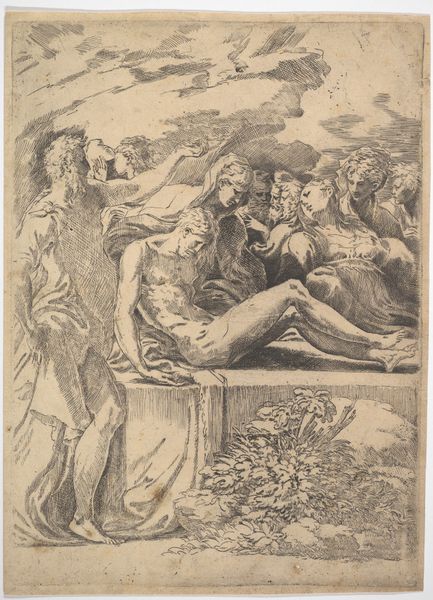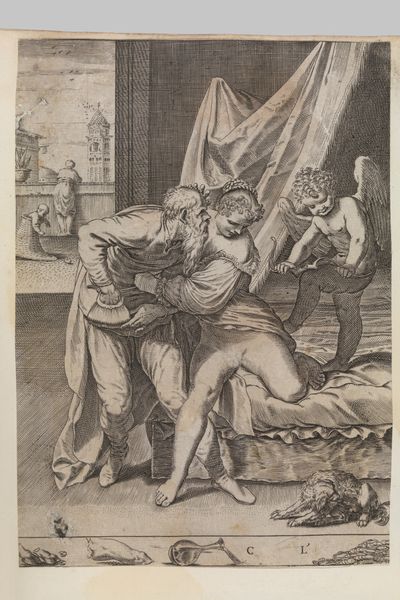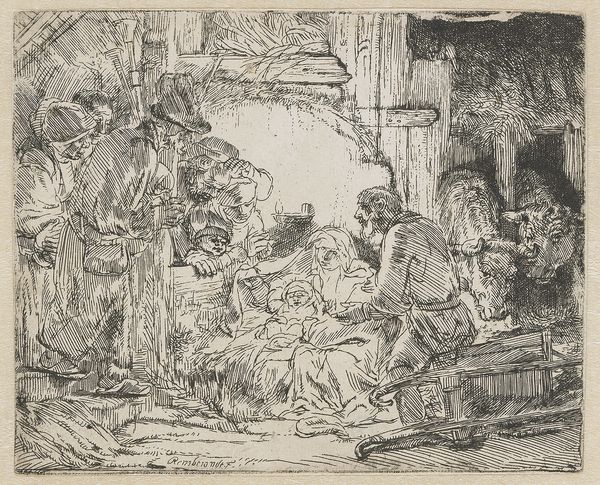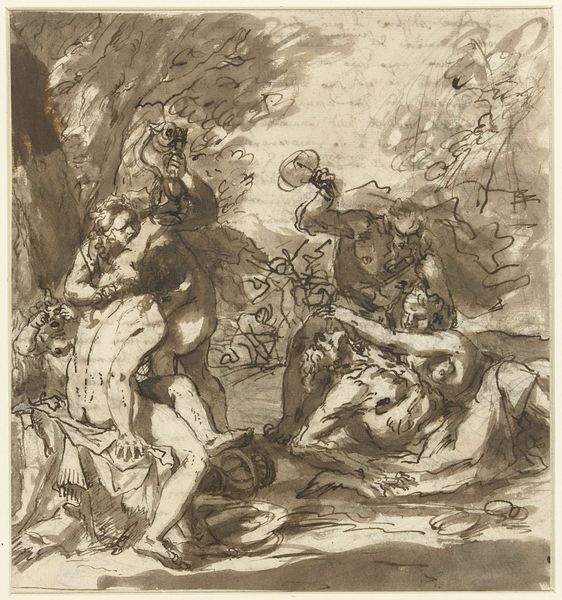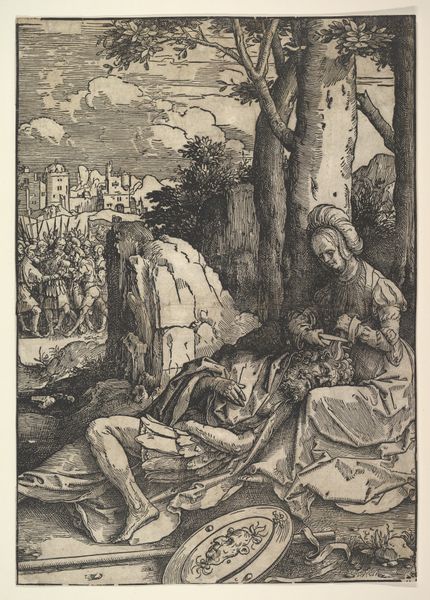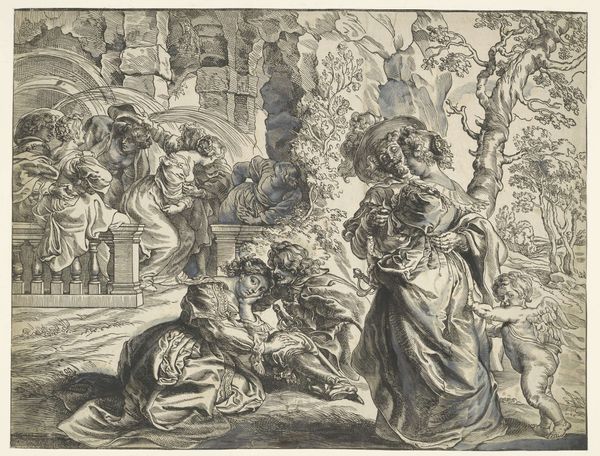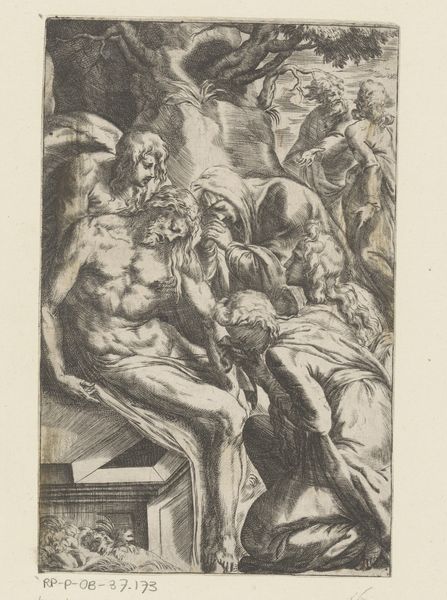
The martyrdom of Saint Erasmus who is prostrate having his innards removed 1630 - 1660
0:00
0:00
drawing, print, engraving
#
drawing
#
baroque
# print
#
figuration
#
line
#
history-painting
#
italian-renaissance
#
engraving
Dimensions: sheet: 10 11/16 x 7 5/16 in. (27.2 x 18.6 cm)
Copyright: Public Domain
Editor: This is a print entitled "The martyrdom of Saint Erasmus who is prostrate having his innards removed," created sometime between 1630 and 1660. It’s an engraving, and the violence depicted is honestly quite shocking. How do you interpret this work? Curator: Indeed. The graphic depiction of St. Erasmus’s martyrdom lays bare the brutal realities of power and persecution during this era. But let's look beyond the immediate horror. Consider the Baroque style: its characteristic dramatic tension aimed not just to depict violence, but also to evoke a visceral response in the viewer. How does this fit into broader historical narratives? Editor: Well, I suppose it highlights the power dynamics of the time…the way religious figures were often used as pawns or symbols in larger political games. Curator: Exactly! This print implicates the intersection of religious devotion, political authority, and the spectacle of suffering. Consider, too, that images like this often functioned as propaganda, reinforcing religious orthodoxy while simultaneously exposing the brutal mechanisms used to maintain social control. Editor: That makes sense. I hadn't considered it in the context of propaganda. Curator: Think about who this image was intended for and what societal norms or cultural expectations were at play. Where might it have been displayed? What response did the artist want to evoke? Do the putti holding the laurel wreath soften or intensify the scene's disturbing message? Editor: So much to consider! I initially saw just a gruesome scene, but now I see how it connects to broader social and political concerns. Curator: It’s in understanding those connections that the real power of art reveals itself. Images like this are painful, yes, but they offer us critical insight into the complexities of the past. I think that looking at violent scenes helps contextualize some of our modern perspectives. Editor: I’ve learned a lot today about the intersections between art, politics, and religion. Thanks!
Comments
No comments
Be the first to comment and join the conversation on the ultimate creative platform.
